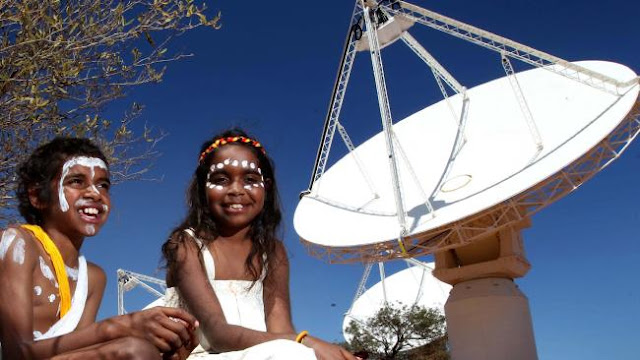 |
| Colin Murty |
WA radio telescope project picked up signal – Solar System
The Square Kilometre Array – SKA, is a radio telescope project to be built in Australia and South Africa andwill have a total collecting area of around one square kilometre and operate over a huge range of frequencies. Its size will make it fifty times more sensitive from other radio instruments and would be needing a very high performance central computing engines with long haul connections having a capacity that would be more than the current global Internet traffic.It will also be capable of surveying the sky ten thousand times faster than its earlier performance. The receiving stations spreading out to distance of around 3,000 kilometres from a concentrated central core will achieve the ability of radio astronomy to provide the highest resolution images in astronomy.
The SKA will be built towards the southern hemisphere in sub-Saharan States with cores in South Africa and Australia, where the sight of the Milky Way Galaxy is greatest and radio interference the least. An innovative radio telescope project in remote Western Australia has picked up signal released before the solar system was born. Six from the 36 dishes of the Square Kilometre Array Pathfinder project, that are located 300 km inland from Geraldton, have captured a wisp of cosmic radio waves that have come from the galaxy PKS B1740-517 towards the southern constellation of Ara.
ASKAP – Detect Galaxies
The latest discovery has astronomers dribbling since the five-billion year old signal which portrays ASKAP, will be capable of detecting galaxies which other telescopes may not be capable of doing so. The signal tends to carry the `imprint’ of cold hydrogen gas, which is the raw material in forming stars and plenty in most galaxies which is passed through on its way here.Astronomers are capable of detecting a galaxy from its hydrogen gas although its starlight is faint or if hidden by dust. Though it is very miniature, the signal stood our clearly in the ASKAP data. James Allison, research leader of the CSIRO comments that `this catch shows that they are going to bag a big haul of galaxies’.
While several radio telescopes are considered to be bedevilled due to radio interference, unwanted signals which muddle up the spectrum, the ASKAP site is skilfully radio quiet. ASKAP provides astronomers with a huge `net’ to search for signals, a 300 MHz wild chunk of radio spectrum for searching. Dr Allison states that there is more than what most telescopes have and it gives them a better chance in finding something new.
ASKAP Survey Focused in Detecting Galaxies
On the other hand, Professor of Astrophysics at the University of Sydney, Elaine Sadler, together with a member of the research team, intends a large ASKAP survey focused in detecting several hundred galaxies. She comments that ASKAP looks at a relatively unexplored section of the radio spectrum, 700 to 1800 megahertz, which means that they will be capable of detecting hydrogen gas deeper into space due to ASKAP’s wide field of view over a much large volume than before.They would be hunting for galaxies which are 5 to 8 billion years old which is a timespan that represents a fifth of the history of the universe. Galaxies were making stars around ten times quicker than they did now, some ten billion years ago. On researching on galaxies five to eight billion year old, astronomers expect to comprehend why the rate has reduced.
Professor Sadler states that they want to learn how much hydrogen galaxies had in this period for the formation of stars and till now they had few tools in doing so. The Square Kilometre Array would be 50 times much more sensitive as the best prevailing radio telescopes, comprising of thousands of connected antennas spanning WA as well as South Arica.

No comments:
Post a Comment